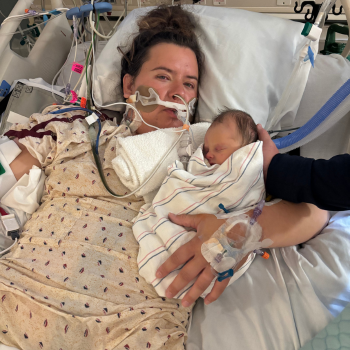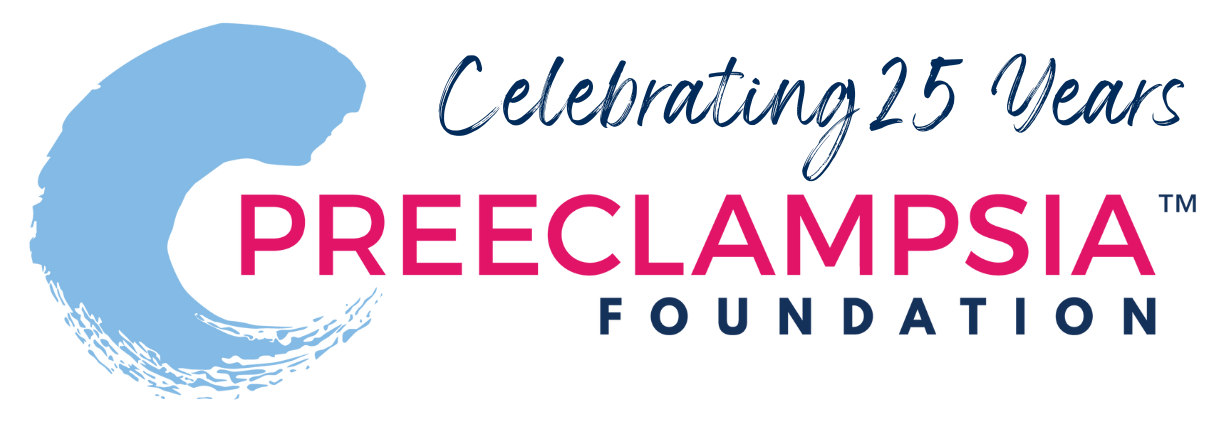
Jen's Story
July 15, 2022 By Jennifer Leonard

At 30 weeks pregnant I was diagnosed with preeclampsia with severe features and HELLP Syndrome. In the days leading up to my diagnosis, I'd had some nausea & vomiting, shortness of breath, mild swelling, and a headache. I'd attributed these to normal third trimester fatigue, amidst a summer heat wave. My mom and the midwife on call from my provider’s office urged me to go to the hospital to get my blood pressure checked. I assumed I was dehydrated and just feeling unwell from the heat and humidity; I could not have imagined what came next.
I was very lucky to arrive at the hospital when I did. My first labs showed my blood pressure was high, my liver enzymes were elevated, there was protein spilling in my urine, my red blood cells were breaking down, and my platelet count was dangerously low. I had only heard of preeclampsia a few times, and because I had no risk factors, I was unaware of the signs and symptoms. I was young, healthy, active, and up until that point had experienced a wonderful and joyous pregnancy; my very first. I had never heard of HELLP Syndrome; the doctors told me it was a rare disease, only affecting 1-2 in every 1,000 pregnancies, but complications from the disease could be very serious, even deadly.
We were told that our baby needed to be delivered, and soon. 48 hours at the very most. I was immediately hooked up to a magnesium sulfate drip that made me confused and feel like my body was on fire. My husband was replacing cold washcloths on my forehead every few minutes as I burned through them. I received injections of steroids that would help my son’s lungs get a boost of strength, in preparation for an early birth. The goal now was to keep me stable enough to receive another dose of steroids in 24 hours; my labs were done every hour to monitor my condition. If my platelets dropped any lower, I would need a c-section under general anesthesia. The thought of being unconscious for the moment of my baby’s birth was unbearable. I was terrified of what was happening to me, worried that I would never get to meet my baby, and that neither of us would leave the hospital alive. We met with the NICU team to discuss what a 30 week baby would look like, potential complications of preterm birth, and outline a plan; he would likely be in the hospital for 2-3 months until he was ready to come home.
My condition improved, and my labs stabilized enough to induce labor using a Foley bulb and Misoprostol. Unfortunately, at 3 centimeters dilated, my sweet boy was in distress; his heart rate dropped with every contraction. It was unsafe to continue labor, and we scheduled a C-Section for 11am the next morning. My husband squeezed my hand in the operating room, and although I felt terrified of what was happening to me, I have never felt braver. When he was born, he let out a cry and the entire OR erupted in cheers. They wheeled him briefly by me, so I could get a first look at my baby before they admitted him to the NICU. I couldn't see or hold him for 24 hours, while I finished treatment on the magnesium; so my husband ran back and forth from my bedside to his isolette, getting to know his care team and delivering tiny syringes of my first drops of colostrum to the NICU.
I knew my strength as a mother the moment I decided I would do anything and everything I could to survive, and make sure my baby made it safely into the world. I don't share my birth story to scare or upset pregnant people, but to educate them; preeclampsia can happen to anyone and knowing when to get help can save your life.
I'm still grieving the full-term pregnancy and empowering birth experience I wanted so badly, but never got to have. But this is my story. I will never be the same person I was before preeclampsia/HELLP. My son is now 9 months old, healthy and thriving; and though I am still healing from the trauma of what happened, I feel more powerful and resilient. I am grateful and proud to have survived.

I was sick throughout my pregnancy, but once the third trimester came it felt different. I was violently ill and could barely keep anything d...
ReadMore- Preeclampsia Almost Took My Life October 17, 2025
- Preeclampsia Diagnosis Went 0-100 In Under 2 Weeks October 03, 2025
- Postpartum Nightmare October 03, 2025
- Madeline’s Survival Story October 03, 2025
- I Wish I Knew More About the Symptoms October 03, 2025
- Hellp My Liver Ruptured September 20, 2025
- Hellp Syndrome September 20, 2025
- Always Trust Your Gut Instincts and Advocate For Your Health September 20, 2025
- Didn’t See That Coming September 08, 2025
- Olivia’s Story September 08, 2025
